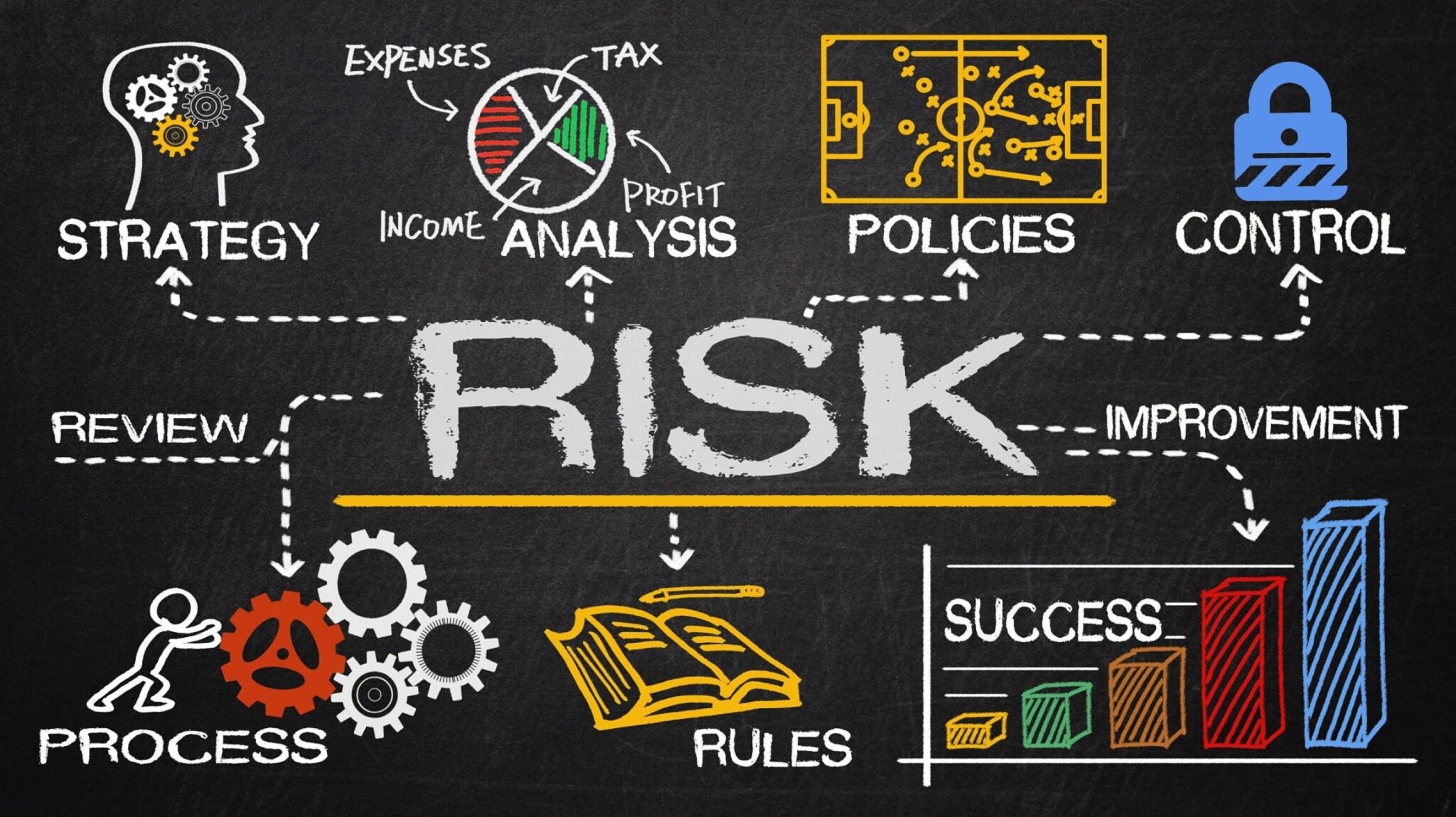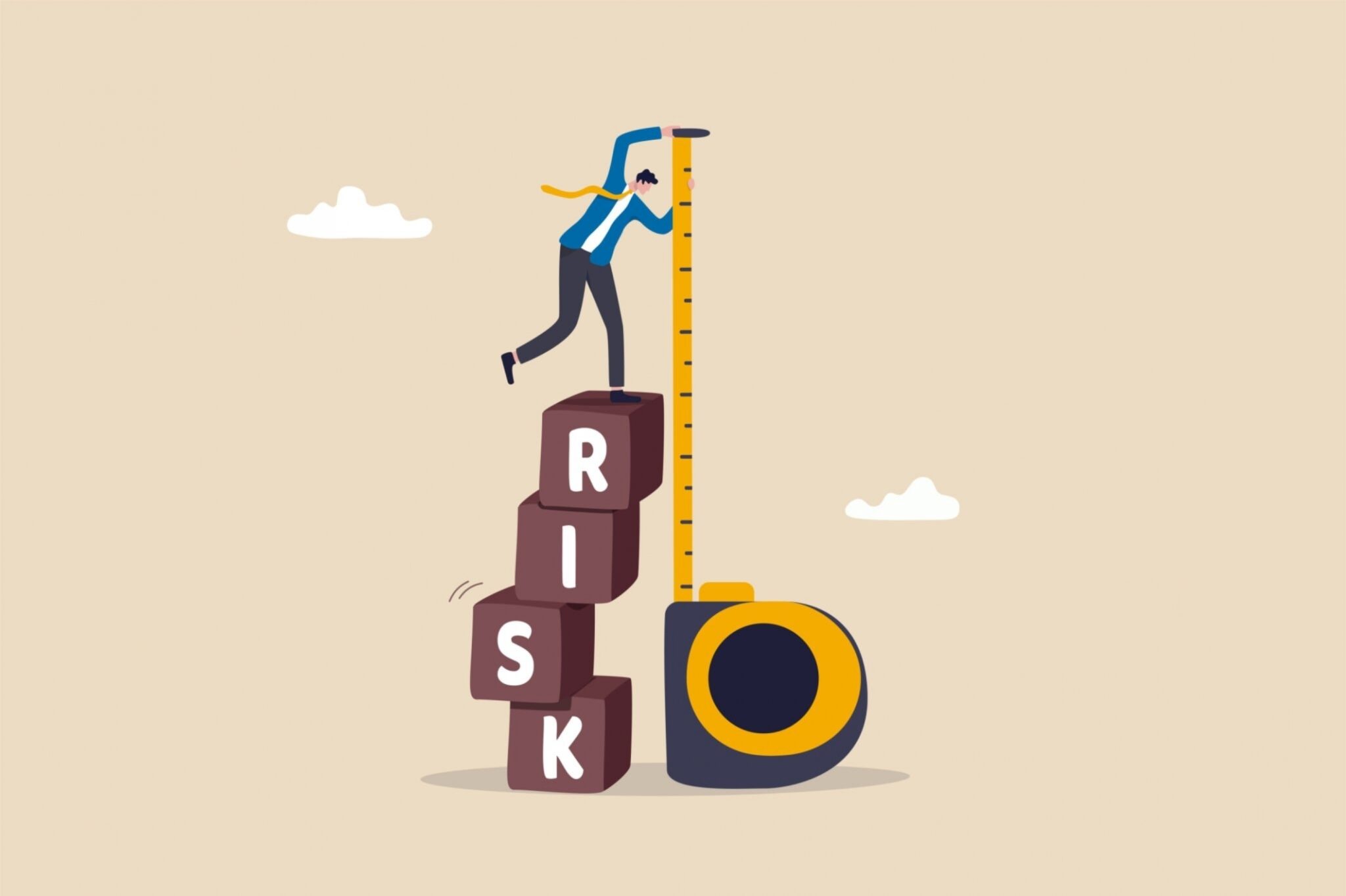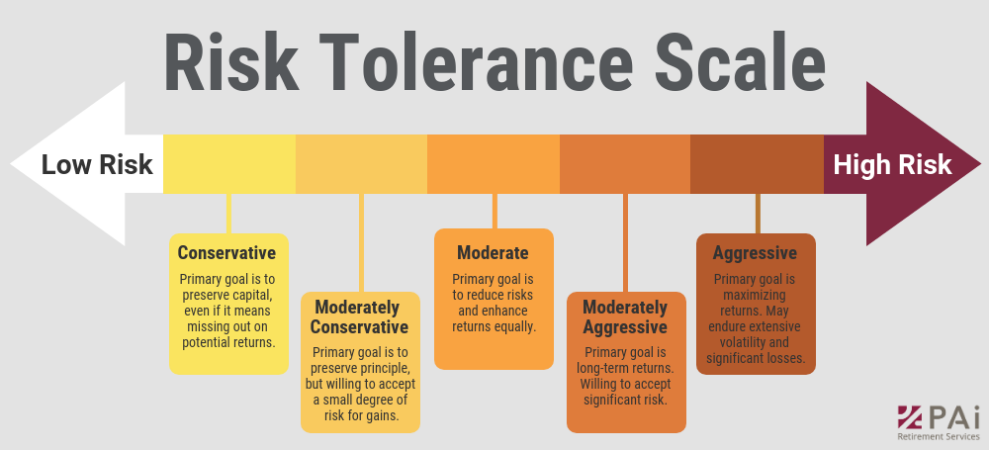Wprowadzenie do zarządzania ryzykiem
Główne cele edukacyjne:
Wstęp: Risk management is the cornerstone of successful investing. This section introduces you to the fundamentals of risk management, the application of risk metrics, and the importance of personalizing your investment strategy according to your risk tolerance.
- Grasp Risk Management Fundamentals: Understand the essence of zarządzanie ryzykiem which involves identifying, assessing, and mitigating potential investment-related risks.
- Apply Risk Metrics: Dive deep into essential risk metrics such as standard deviation, beta, and VaR to assess a stock’s volatility, market sensitivity, and possible losses.
- Personalize Your Strategy: Recognize the significance of personal risk tolerance in shaping your investment approach and how it is influenced by financial conditions, time horizons, and overarching investment objectives.

Figure title: Understanding Investment Risks and Returns
Źródło: Infografika niestandardowa
Opis: The infographic emphasizes the importance of knowledge in investment. Additionally, it advises against investing in businesses that one does not understand, highlighting the significance of comprehension in making informed investment decisions.
Najważniejsze wnioski:
- Knowledge is crucial in investment to achieve high returns with low risk.
- Lack of understanding is the primary source of risk in investments.
- It’s essential to invest only in businesses or sectors you comprehend.
Aplikacja: For anyone venturing into the world of investments, it’s vital to educate oneself about the chosen investment vehicle. This knowledge not only reduces the associated risks but also ensures that one makes informed decisions that align with their financial goals. Avoid jumping into trends without understanding them, as this can lead to potential financial pitfalls.

Postać: An illustrative concept of risk management featuring a large cogwheel protected under an umbrella, accompanied by money bills and various icons symbolizing different aspects of business and finance.
Źródło: iStockZdjęcie
Risk management is the process of identifying, evaluating, and mitigating the risks associated with investing. Investors must understand risk management because it helps them make informed decisions, protect their investments, and achieve their financial goals. In the upcoming chapters, we will provide an overview of risk management concepts, but for a more comprehensive understanding, consider enrolling in a separate risk management and psychology course.
11.1 Measuring Risk and Understanding Volatility

Postać: A conceptual illustration of risk assessment, showcasing a balance scale weighing potential danger against acceptable loss, with coins on one side and a caution sign on the other, emphasizing the evaluation of financial risks.
Źródło: iStockZdjęcie
Risk measures for a stock include standard deviation, beta, and value at risk (VaR). These metrics help investors assess the stock’s volatility, sensitivity to market movements, and potential for losses. Applying these measures can help investors gauge their overall portfolio risk and make more informed investment decisions.
11.2 Personal Risk Tolerance

Postać: A 3D illustration depicting the balance between reward and risk. On a seesaw, the word “REWARD” is on one side and “RISK” on the other, symbolizing the delicate equilibrium between potential gains and potential losses in business and life.
Źródło: iStockZdjęcie
Risk tolerance refers to an individual’s willingness and ability to accept investment risk. It is influenced by factors such as investment goals, time horizon, and financial situation. Understanding one’s risk tolerance is essential for creating a suitable investment strategy. For a more in-depth exploration of risk tolerance, consider enrolling in a separate risk management and psychology course.

Figure title: Risk Tolerance Scale & Portfolio Types
Źródło: PAI
Opis: The figure illustrates a risk tolerance scale, transitioning from low risk on the left to high risk on the right. Along this scale, five distinct portfolio types are mapped, showing their respective risk levels. These portfolios range from conservative, implying the least risk, to aggressive, suggesting the highest level of risk.
Najważniejsze wnioski:
- Portfolio Risk Levels: The scale indicates five portfolios—conservative, moderate conservative, moderate, moderate aggressive, and aggressive. Their positions on the scale denote the inherent risk they carry.
- Guidance for Investors: The visual representation aids investors in associating specific portfolios with their respective risk appetites.
Aplikacja: The scale is instrumental in guiding investors to choose portfolios that align with their risk tolerance. Understanding where a specific portfolio lies on the risk spectrum ensures that investors can make choices that resonate with their financial goals and comfort levels.
11.3 Risk Measurement Techniques

Postać: This infographic presents a visually appealing representation of a financial or investment concept. The detailed elements within the graphic are designed to convey complex information in an easily digestible format. Users should take their time to analyze each section of the infographic to grasp the full message. Remember, infographics are a great tool to simplify intricate data, but always ensure to cross-reference with other reliable sources for a comprehensive understanding.
Źródło: Infografika niestandardowa
To manage risk, investors can use various techniques such as diversification, asset allocation, position sizing, and stop-loss orders. These practices help mitigate the impact of individual investment risks and optimize portfolio performance.
11.4 Risk Categories
Risks in investing in a stock can be categorized as systematic (market) risk and unsystematic (firm-specific) risk.
- Systematic risk: This risk affects the entire market or asset class and cannot be eliminated through diversification. Examples include interest rate risk, inflation risk, and political risk.
- Unsystematic risk: This risk is specific to a particular company or industry and can be reduced through diversification. Examples include management risk, financial risk, and regulatory risk.
Understanding and managing both types of risk is crucial for a successful investment strategy.

Figure title: Types of Investment Risk: Systematic vs. Unsystematic
Źródło: BBA Lectures
Opis: The figure distinguishes between two fundamental risk types in finance: systematic and unsystematic risk. While systematic risk encompasses uncontrollable, market-wide risks, unsystematic risk pertains to risks that an organization can control. Both these risk categories further branch out into various sub-components, detailing their intricate facets.
Najważniejsze wnioski:
- Systematic Risk Subcomponents: Systematic risk includes interest rate risk, market risk, and inflation risk, with each type further splitting into specific subcategories.
- Unsystematic Risk Subcomponents: Unsystematic risk delves into liquidity risk, financial risk, and operational risk, with additional subdivisions within each.
Aplikacja: By delineating between systematic and unsystematic risks, investors can better strategize their investment choices. Recognizing the different risk facets helps in making informed decisions, optimizing asset allocations, and planning risk mitigation.
Najważniejsze wnioski:
Oświadczenie końcowe: The journey of mastering risk management begins with a clear understanding of its fundamentals, application of risk metrics, and the personalization of your investment strategy. This section lays the groundwork for a disciplined and risk-aware approach to investing, empowering you to safeguard your investments and attain your financial aspirations.
- Understanding Risk: Investment comes with risks; effective zarządzanie ryzykiem ensures you are prepared, not surprised. Using metrics like standard deviation and VaR aids in making calculated decisions.
- Tailored Investment Choices: Your risk tolerance, molded by personal factors, is pivotal in shaping your investment decisions. Know your comfort level to strategize better.
- Mitigation Techniques: Employ techniques like diversification and stop-loss orders to minimize individual investment risks, enhancing portfolio performance.
- Diverse Risk Categories: Investing risks can be systematic (affecting entire markets) or unsystematic (specific to firms). Grasping the nuances of each category is paramount for strategic planning.
